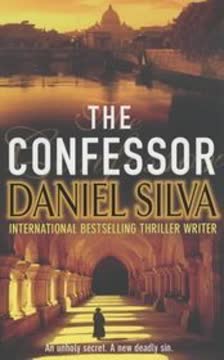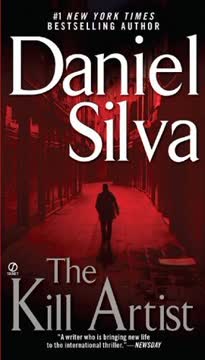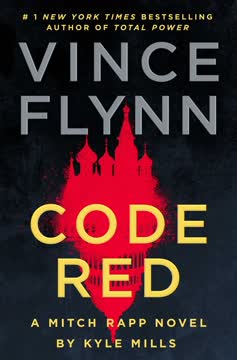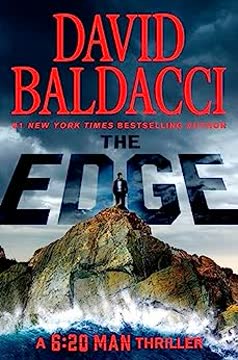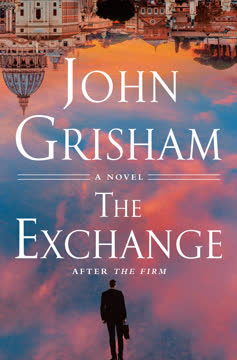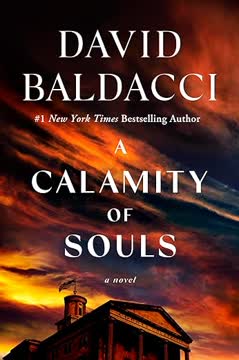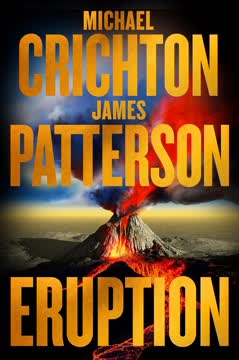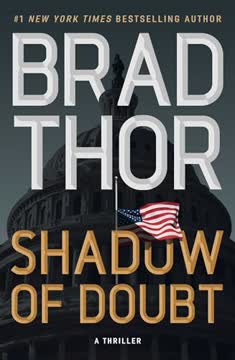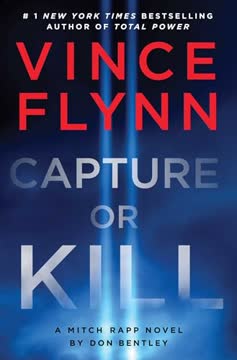Plot Summary
Munich Shadows and Secrets
In the bohemian heart of Munich, Professor Benjamin Stern, a Jewish academic and Holocaust scholar, is murdered in his apartment. The killing is brutal, staged to look like a neo-Nazi hate crime, but the precision and coldness of the act suggest a professional hand. Stern's death sends ripples through his community and alarms his old friend, Gabriel Allon, a former Israeli intelligence operative now living as an art restorer in Venice. The murder is not random; Stern was working on a secretive book about the Vatican's role during World War II, and his research may have unearthed truths powerful enough to threaten the highest echelons of the Catholic Church.
Vatican's Unwilling Shepherd
Pietro Lucchesi, unexpectedly elected as Pope Paul VII, is a gentle, scholarly man burdened by the Church's decline and haunted by its past. He is determined to confront the Church's complicity in the Holocaust, but his efforts are met with fierce resistance from the Curia, especially Cardinal Brindisi, the hardline Secretary of State. Lucchesi's election is seen as a compromise, but he is not content to be a caretaker. He sets in motion a plan to reveal the Church's darkest secrets, risking his own life and the stability of the Vatican.
The Restorer's Veil
In Venice, Gabriel Allon works under the alias Mario Delvecchio, restoring a Bellini masterpiece. His quiet life is interrupted when Ari Shamron, his old mentor from Israeli intelligence, asks him to investigate Stern's murder. Gabriel's personal losses—his wife's trauma and his son's death—haunt him, but his loyalty to friends and the pursuit of truth draw him back into the shadows. The art of restoration becomes a metaphor for his quest: to uncover and heal the wounds of history.
Death in the Family
Gabriel meets Shamron in the Venetian ghetto, where the past is never far away. Shamron reveals that Stern was once part of their clandestine team, and his murder may be linked to secrets powerful enough to kill for. Gabriel assumes a new identity to investigate in Munich, navigating a web of lies, surveillance, and hidden motives. The emotional weight of Stern's death and Gabriel's own unresolved grief propel him deeper into the mystery.
The Munich Investigation
Posing as Stern's half-brother, Gabriel searches the murdered man's apartment and storage, finding only cryptic clues: a postcard from Italy, a photograph from their youth, and hints of a missing manuscript. He senses the official investigation is compromised, possibly manipulated by forces within the German police and the Vatican. Gabriel's every move is shadowed by Detective Weiss, whose true loyalties are ambiguous. The investigation leads Gabriel to Italy, following Stern's last steps.
Conclave of Power
Within the Vatican, Cardinal Brindisi and a clandestine brotherhood known as the Institute (Crux Vera) conspire to maintain the Church's authority and suppress any threat to its reputation. The Institute's reach extends into European governments, finance, and security services. As the Pope prepares to announce a historic gesture of reconciliation with the Jews, the Institute plots to stop him, fearing exposure of a wartime covenant between the Vatican and Nazi Germany.
The Institute's Hidden Hand
Carlo Casagrande, the Vatican's chief of security and a member of the Institute, orchestrates a campaign to eliminate all who know the truth about the Garda covenant. He hires the Leopard, a legendary assassin, to silence witnesses and destroy evidence. The Institute's leaders, including the ruthless financier Pucci and Cardinal Brindisi, debate whether to kill the Pope himself to protect their secrets. The stakes escalate as Gabriel's investigation threatens to unravel their web.
Clues by the Lake
Gabriel traces Stern's last journey to a convent on Lake Garda, where he meets Mother Vincenza, who claims the convent sheltered Jews during the war. Her story is contradicted by local Jewish historians, and an anonymous tip warns Gabriel that she is lying. The real secret lies with Sister Regina, a former nun who witnessed a clandestine meeting between Vatican officials and a Nazi envoy. Gabriel's search for Sister Regina and the enigmatic "Martin Luther" becomes a race against time.
The Nun's Testimony
In Provence, Gabriel finds Antonella Huber, daughter of Sister Regina. She shares her mother's letter, a harrowing account of a 1942 meeting at the convent where Vatican officials, including members of Crux Vera, agreed to remain silent about the Holocaust in exchange for political considerations. The letter, corroborated by a Nazi memorandum, is the key to understanding Stern's murder and the Vatican's complicity. The truth is devastating, implicating the Church in a conspiracy of silence.
The Hunt for Truth
Gabriel and Chiara, an Israeli agent and the rabbi's daughter, are pursued across Europe by Vatican operatives and the Leopard. They narrowly escape assassination attempts and retrieve hidden documents from Stern's Munich apartment, thanks to the help of a Holocaust survivor. The evidence—Sister Regina's letter and the Nazi memorandum—confirms the existence of the Garda covenant and Crux Vera's role in orchestrating murders to keep it secret.
Crux Vera Unveiled
As Gabriel prepares to expose the truth, the Institute's internal tensions explode. Casagrande, tormented by guilt, turns against his masters and arranges for the Leopard to assassinate Cardinal Brindisi, the leader of Crux Vera. The Vatican is thrown into chaos as the conspiracy is revealed, and the Pope's life hangs in the balance. The Leopard, wounded but not caught, becomes Gabriel's final target.
Rome's Deadly Labyrinth
In Rome, Gabriel is framed as a papal assassin and hunted by police and Vatican security. With Chiara's help, he escapes a deadly ambush, but not before a violent shootout claims the lives of allies and enemies alike. The Leopard, aided by his lover Katrine, infiltrates the Vatican, leaving a trail of bodies. The city becomes a labyrinth of betrayal, with Gabriel racing to prevent an assassination that could plunge the Church into further scandal.
The Assassin's Trail
The Leopard's attempt to kill the Pope is foiled, but he escapes, leaving devastation in his wake. Gabriel pursues him through the streets of Rome, culminating in a brutal motorcycle chase. The Leopard sacrifices Katrine to slow Gabriel, but is ultimately forced to flee. The cost is high: Gabriel is gravely injured, and the Vatican reels from the violence and exposure of its secrets.
Synagogue Reckoning
Despite the chaos, Pope Paul VII proceeds with his visit to the Great Synagogue of Rome. In a groundbreaking speech, he confesses the Church's sins of silence and complicity during the Holocaust, announces the opening of the Vatican archives, and calls for reconciliation with the Jewish people. The moment is both redemptive and dangerous, as enemies within the Church plot his downfall. Gabriel, now trusted by the Pope, stands guard as history is made.
Blood in St. Peter's
The Leopard assassinates Cardinal Brindisi and escapes the Vatican in a hail of gunfire, leaving behind a trail of dead guards and police. Casagrande, wracked by guilt, commits suicide in a church. The Institute collapses, its leaders disgraced or in exile. The Vatican, under the Pope's leadership, begins a painful process of reform and self-examination, but the wounds of betrayal and loss linger.
The Pope's Confession
In a private meeting, the Pope reveals to Gabriel that he was the orphaned boy present at the Garda covenant, and that he and his secretary orchestrated the exposure of Crux Vera by enlisting Stern and Gabriel. The Pope seeks forgiveness for the deaths caused by his plan, acknowledging the moral ambiguity of using others to achieve justice. Gabriel, scarred but resolute, accepts the burden of truth and the necessity of confronting evil, even within sacred institutions.
Restoration and Redemption
Gabriel recovers in Venice, watched over by Chiara. The Vatican commission begins its work, and the Church undergoes a painful reckoning. The Bellini altarpiece is finally restored, symbolizing the possibility of healing and renewal. Gabriel and Chiara's relationship deepens, offering hope amid the scars of violence and betrayal. The past cannot be undone, but the future is shaped by the courage to face it.
The Leopard's End
Months later, Gabriel tracks the Leopard to his Swiss hideout. In a final confrontation, Gabriel kills the assassin, avenging Stern and all the victims of Crux Vera's conspiracy. The cycle of violence is broken, but the cost is etched into Gabriel's soul. The story ends with a sense of hard-won justice and the enduring struggle to restore what history has shattered.
Characters
Gabriel Allon
Gabriel Allon is a man divided between the worlds of art and espionage. Scarred by personal tragedy—the loss of his son and the institutionalization of his wife—he seeks solace in restoring paintings, yet is repeatedly drawn back into the shadows by loyalty and conscience. Gabriel's relationships are marked by loss and longing, but also by fierce loyalty to friends like Benjamin Stern and mentors like Ari Shamron. Psychologically, Gabriel is driven by a need to repair what is broken, both in art and in history. His journey in The Confessor is one of moral reckoning: confronting the sins of the past, risking his life for truth, and ultimately accepting that restoration—of art, memory, and justice—is a never-ending, redemptive struggle.
Pope Paul VII (Pietro Lucchesi)
Pope Paul VII is a gentle, scholarly man thrust into the papacy against his will. Haunted by memories of his orphaned childhood and the trauma of witnessing the Vatican's wartime silence, he is determined to confront the Church's complicity in the Holocaust. His relationship with Father Donati is one of deep trust, and his friendship with Tiepolo and Gabriel reveals his longing for honesty and redemption. Psychologically, the Pope is burdened by guilt and the weight of history, yet his courage in facing the truth marks his transformation from caretaker to reformer. His confession and willingness to risk everything for reconciliation make him a tragic yet heroic figure.
Ari Shamron
Ari Shamron is the legendary former head of Israeli intelligence, a man whose life has been shaped by survival, vengeance, and the defense of his people. He is both mentor and manipulator, pushing Gabriel into action while carrying his own burdens of guilt and loss. Shamron's relationships are complex—he is feared, respected, and sometimes resented by those he leads. Psychologically, he is driven by a relentless sense of duty and a deep-seated fear of Jewish vulnerability. His willingness to bend rules and use others for the greater good reflects the moral ambiguities of espionage and history.
Chiara Zolli
Chiara is the daughter of Venice's rabbi and an Israeli agent. Intelligent, resourceful, and emotionally resilient, she becomes Gabriel's ally and eventual love interest. Her Jewish identity and family history connect her deeply to the novel's themes of memory and survival. Chiara's psychological strength lies in her ability to balance compassion with action, and her relationship with Gabriel offers both healing and hope. She is a bridge between past and future, tradition and change.
Benjamin Stern
Benjamin Stern is a brilliant Holocaust historian whose murder sets the plot in motion. Once a member of Gabriel's clandestine team, Stern is driven by a passion for truth and justice. His research into the Vatican's wartime actions makes him a target, and his death is both a personal loss for Gabriel and a symbol of the dangers faced by those who challenge powerful institutions. Stern's legacy is the quest for historical accountability, and his presence haunts the narrative as a reminder of the cost of silence.
Cardinal Marco Brindisi
Brindisi is the Vatican's Secretary of State and the leader of Crux Vera, the secret society determined to protect the Church's reputation at any cost. Cold, calculating, and ruthless, he embodies the institutional resistance to truth and reform. His relationship with the Pope is adversarial, marked by manipulation and veiled threats. Psychologically, Brindisi is driven by fear of change and a belief in the Church's infallibility. His downfall is both a personal tragedy and a necessary reckoning for the institution he serves.
Carlo Casagrande
Casagrande is the Vatican's chief of security and a key member of Crux Vera. Once a hero for crushing terrorism, he becomes a tool of the Institute's murderous campaign. Tormented by guilt and the memory of his family's murder, Casagrande's psychological unraveling leads him to betray his masters and ultimately take his own life. His arc reflects the corrosive effects of secrecy, loyalty, and moral compromise.
The Leopard (Eric Lange)
The Leopard is a legendary, elusive assassin whose skills and amorality make him the perfect weapon for Crux Vera. His identity is fluid, his loyalties for sale, and his conscience absent. Psychologically, he is a void—motivated by money, survival, and a perverse sense of professionalism. His relationship with Katrine is transactional, and his encounters with Gabriel are marked by mutual recognition of the darkness within. The Leopard's death at Gabriel's hands is both justice and a release from the cycle of violence.
Father Luigi Donati
Donati is the Pope's private secretary, fiercely loyal and Machiavellian in his methods. He orchestrates the exposure of Crux Vera by manipulating events behind the scenes, using Gabriel and Stern as instruments of reform. Psychologically, Donati is pragmatic, intelligent, and willing to risk everything for the Pope's vision. His actions blur the line between righteousness and ruthlessness, embodying the complexities of institutional change.
Francesco Tiepolo
Tiepolo is a Venetian art restorer and friend to both Gabriel and the Pope. His role is that of intermediary, helping Gabriel gain access to the Vatican's inner sanctum. Tiepolo's warmth, humor, and loyalty provide a human counterpoint to the novel's darker themes. Psychologically, he represents the enduring power of friendship, art, and the possibility of redemption.
Plot Devices
Dual Narrative Structure
The novel employs a dual narrative, alternating between Gabriel's personal quest and the Vatican's internal machinations. This structure allows for parallel development of character and theme, highlighting the intersection of individual conscience and institutional power. The use of multiple perspectives—Gabriel, the Pope, Shamron, and the conspirators—creates a tapestry of motives and secrets, building suspense and emotional resonance.
Foreshadowing and Symbolism
The motif of art restoration mirrors Gabriel's investigation: both involve uncovering hidden layers, confronting damage, and striving for wholeness. The recurring imagery of shrouds, scars, and hidden compartments foreshadows revelations and betrayals. The Bellini altarpiece, the synagogue, and the convent serve as symbolic sites where history, faith, and memory collide.
False Flags and Misdirection
The plot is driven by layers of deception: staged hate crimes, false identities, and manipulated investigations. The Institute's use of neo-Nazi symbols to mask its own crimes exemplifies the theme of misdirection. Gabriel's own disguises and the shifting allegiances of characters like Casagrande and Donati keep the reader—and the protagonists—off balance, heightening tension and uncertainty.
Historical Documents and Testimonies
The discovery of Sister Regina's letter and the Nazi memorandum are pivotal plot devices, grounding the fictional conspiracy in the real horrors of history. These documents serve as both evidence and catalysts, driving the action and forcing characters to confront uncomfortable truths. The interplay between personal testimony and official record underscores the novel's exploration of memory, guilt, and accountability.
The Assassin's Pursuit
The Leopard's presence is a constant source of danger, his actions propelling the narrative toward its violent climax. The assassin's pursuit of Gabriel and the Pope creates a sense of impending doom, while the final chase and confrontation provide catharsis and closure. The use of a professional killer as antagonist externalizes the novel's themes of institutional violence and the cost of silence.
Analysis
The Confessor is a gripping exploration of the intersection between personal conscience and institutional power, set against the backdrop of the Catholic Church's most painful legacy: its silence during the Holocaust. Daniel Silva crafts a narrative that is both a thriller and a meditation on the nature of truth, guilt, and redemption. The novel challenges readers to confront the dangers of secrecy, the corrosive effects of complicity, and the necessity of facing history's darkest chapters. Through Gabriel Allon's journey, we witness the cost of seeking justice in a world where the past is never truly past, and where the restoration of memory is as vital as the restoration of art. The book's lessons are urgent and timeless: that institutions must be held accountable, that silence in the face of evil is itself a crime, and that healing—whether of paintings, souls, or societies—requires courage, honesty, and the willingness to bear witness. In an age still grappling with the legacies of genocide, religious conflict, and institutional abuse, The Confessor offers both a warning and a hope: that the truth, however painful, is the only path to reconciliation and renewal.
Last updated:
Review Summary
The Confessor receives mostly positive reviews, with readers praising Silva's intricate plot, historical context, and character development. Many appreciate the exploration of Vatican involvement during WWII and the Holocaust. Some find the pacing slow initially but engaging later. Critics note formulaic elements and similarity to previous books. Gabriel Allon's character and the blend of art restoration and espionage are highlights. Overall, readers find it a compelling thriller with thought-provoking themes, though some desire more originality in the series.
Gabriel Allon Series
Similar Books
Download PDF
Download EPUB
.epub digital book format is ideal for reading ebooks on phones, tablets, and e-readers.
